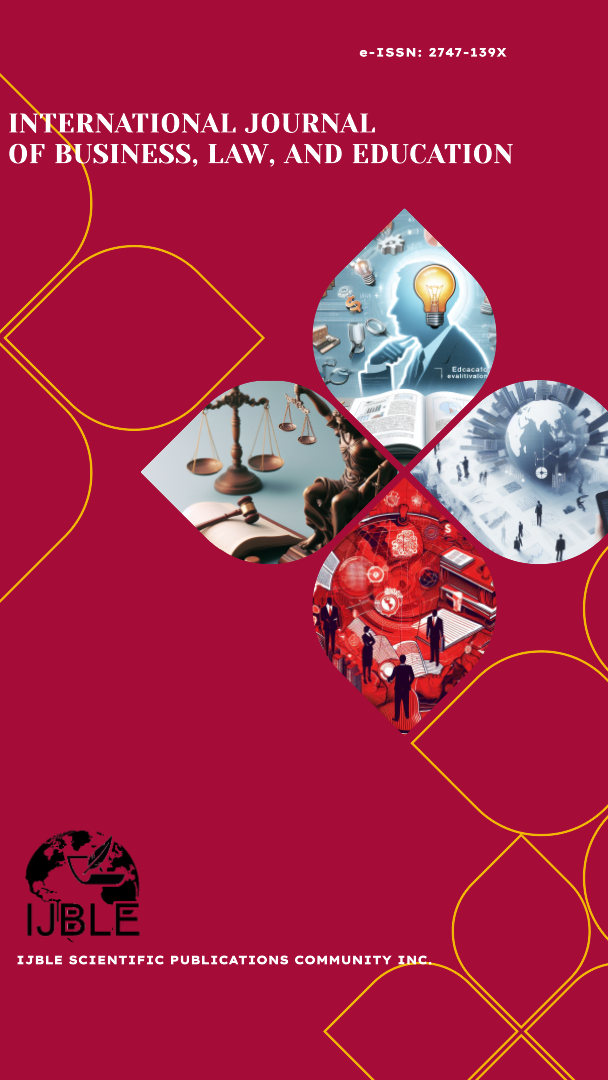Creditor Protection in Individual Company Bankruptcy
DOI:
https://doi.org/10.56442/ijble.v6i2.1269Keywords:
legal entity, bankruptcy, creditors protectionAbstract
This study examines the legal and financial implications of Indonesia’s recognition of sole proprietorships as a new legal entity under the Job Creation Law for micro, small, and medium enterprises (MSMEs). While this status facilitates business establishment and access to funding, it raises risks for creditor protection due to weak legal and financial safeguards. Using a non-doctrinal, empirical juridical approach through interviews and legal analysis, the research identifies key challenges: MSME actors’ limited legal awareness, creditors’ restricted access to financial information, poor separation of personal and business assets, and inefficiencies in the judicial system. These conditions heighten creditor vulnerability in cases of insolvency. The study recommends strengthening regulations, improving legal education for MSMEs, enhancing financial transparency, and empowering relevant institutions to ensure fairer creditor protection and a more sustainable business climate, particularly in Labuan Bajo.
References
Ariqah, P., & Anisah, S. (2022). ARRANGEMENT OF BANKRUPTCY DEBT REPAYMENT TOWARD EMPLEYEES IN INDONESIA AND GERMANY. Indonesia Private Law Review, 3(1), 47–62. Scopus. https://doi.org/10.25041/iplr.v3i1.2598
Fahamsyah, E., Taniady, V., Saputra, R. D., Rachim, K. V., & Wijaya, G. (2024). The Problem of Filing for Bankruptcy in Indonesian Law: Should the Insolvency Test Mechanism be Applied? Volksgeist: Jurnal Ilmu Hukum Dan Konstitusi, 7(1), 199–218. Scopus. https://doi.org/10.24090/volksgeist.v7i1.10079
Hadi Shubhan, M. (2019). DECONSTRUCTING SIMPLE EVIDENCE IN BANKRUPTCY PETITION FOR LEGAL CERTAINTY. Indonesia Law Review, 9(2), 66–108. Scopus. https://doi.org/10.15742/ilrev.v9n2.527
Harnida, M., Vasudevan, A., Mardah, S., Fajriyati, I., Mayvita, P. A., Hunitie, M. F. A., & Mohammad, S. I. S. (2024). Micro, Small, and Medium-Sized Enterprises (MSMEs) Sustainability: The Strategic Role of Digitalization, Financial Literacy, and Technological Infrastructure. Journal of Ecohumanism, 3(6), 1248–1260. Scopus. https://doi.org/10.62754/joe.v3i6.4097
Johan, S., & Ariawan, A. (2023). Sole proprietorship and limited liability company: Financial liabilities to creditors. International Journal of Business, Economics and Law, 22(2), 1–8. https://www.researchgate.net/publication/367622823
Lie, G. (2023). A Negative Pledge as an Alternative Solution to Achieve the Pari Passu Pro-Rata Parte Principle. International Journal of Sustainable Development and Planning, 18(1), 265–274. Scopus. https://doi.org/10.18280/ijsdp.180128
Nasution, E. R. (2023). How to create Legal Protection for Debt Collateral in MSMEs in Indonesia. West Science Social and Humanities Studies. https://doi.org/10.58812/wsshs.v1i06.423
Omar, P. (2016). International insolvency law: Themes and perspectives (2nd ed.). Routledge.
Park, C.-Y. (2024). ASEAN Economic Integration: Addressing Challenges and Embracing Opportunities. Asian Economic Policy Review, 19(2), 172–193. Scopus. https://doi.org/10.1111/aepr.12462
Sjahdeini, S. R. (2010). Sejarah, asas, dan teori hukum kepailitan. Kencana Prenada Media Group.
Subhan, M. H. (2021). Hukum kepailitan dan PKPU di Indonesia. Prenada Media.
Suroso, J. T., Durahman, D., & Budi, I. (2024). The simplification of licensing procedure in job creation law: The effectiveness to attract foreign investor. Cogent Social Sciences, 10(1). Scopus. https://doi.org/10.1080/23311886.2024.2414509
Susilo, I., & Raharjo, S. (2019). Prinsip-prinsip perlindungan kreditor dalam hukum kepailitan Indonesia. Jurnal Hukum IUS QUIA IUSTUM, 26(3), 421–440. https://doi.org/10.20885/iustum.vol26.iss3.art6
Triyanto, T. (2020). Analisis perlindungan kreditor pada perkara kepailitan. Jurnal Rechtsvinding, 9(2), 155–170. https://rechtsvinding.bphn.go.id
United Nations Commission on International Trade Law (UNCITRAL). (2014). Legislative guide on insolvency law. United Nations.
Downloads
Published
How to Cite
Issue
Section
License

This work is licensed under a Creative Commons Attribution-NonCommercial-ShareAlike 4.0 International License.







